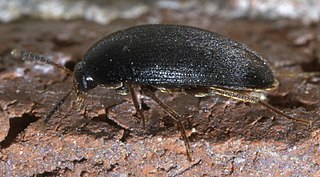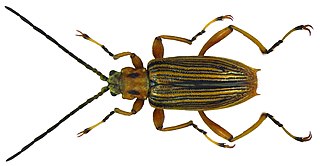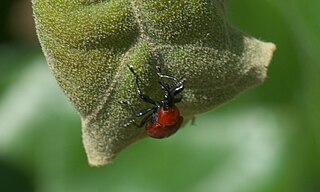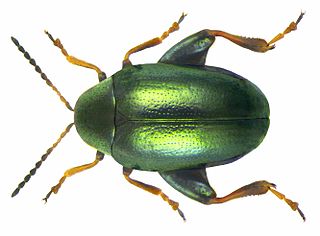
Buddleja is a genus comprising over 140 species of flowering plants endemic to Asia, Africa, and the Americas. The generic name bestowed by Linnaeus posthumously honoured the Reverend Adam Buddle (1662–1715), an English botanist and rector, at the suggestion of William Houstoun. Houstoun sent the first plants to become known to science as buddleja to England from the Caribbean about 15 years after Buddle's death. Buddleja species, especially Buddleja davidii and interspecific hybrids, are commonly known as butterfly bushes and are frequently cultivated as garden shrubs. Buddleja davidii has become an invasive species in both Europe and North America.
Johann Karl Wilhelm Illiger was a German entomologist and zoologist.

The blue spruce, also commonly known as green spruce, Colorado spruce, or Colorado blue spruce, is a species of spruce tree native to North America in Arizona, Colorado, Idaho, New Mexico, Utah and Wyoming. It is noted for its blue-green colored needles, and has therefore been used as an ornamental tree in many places far beyond its native range.

Tetratomidae is a small family of beetles sometimes called polypore fungus beetles. The family consists of several genera, most of which used to be in the family Melandryidae. Tetratomidae can be found worldwide.

Dermestes is a genus of beetles in the family Dermestidae, the skin beetles. The genus is distributed worldwide.

Melandryidae is a family of beetles in the superfamily Tenebrionoidea. Members of the family are found worldwide, with around 420 species in 60 genera. Larvae and adults are generally associated with rotting wood and wood-decomposing fungi.

Salpingidae or narrow-waisted bark beetles is a family of beetles in the superfamily Tenebrionoidea. The species are small, about 1.5 – 7 mm in length. The family is globally distributed and consists of about 45 genera and 300 species, which are generally found in the temperate regions of both hemispheres. The family is mainly associated with plants as well as with ascomycete and hyphomycete fungi. Some members of the family are associated with unusual habitats, like Aegialites and Antarcticodomus, which are found in coastal areas including the intertidal zone, with former feeding on algae.

Macroplea appendiculata is a species of leaf beetle of the subfamily Donaciinae which can be found in Northern and Central Europe.
Colaspidea globosa is a species of beetle in the Chrysomelidae family that can be found in France, Spain, on the island of Sicily, and North Africa.
Apteropeda ovulum is a species of flea beetle in the family Chrysomelidae that can be found in western Europe and North Africa.

Smaragdina affinis is a species of short-horned leaf beetles belonging to the family Chrysomelidae, subfamily Cryptocephalinae.
Ceramida longitarsis is a species of beetle in the Melolonthinae subfamily. It was described by Johann Karl Wilhelm Illiger in 1803 and is endemic to Portugal.

Trichodes favarius is a beetle species of checkered beetles belonging to the family Cleridae, subfamily Clerinae. It can be found in Austria, Croatia, Greece, Hungary, and Italy.

Homoeolabus is a genus of leaf-rolling weevils in the beetle family Attelabidae. There are at least two described species in Homoeolabus.

Soronia is a genus of sap-feeding beetles in the family Nitidulidae. There are about 14 described species in Soronia.

Dibolia is a genus of flea beetles in the family Chrysomelidae. There are some 60 described species worldwide.

Apteropeda is a genus of flea beetle in the family Chrysomelidae.
Hydrovatus lyratus, is a species of predaceous diving beetle widespread in South Asia, South East Asia and Australian region.













